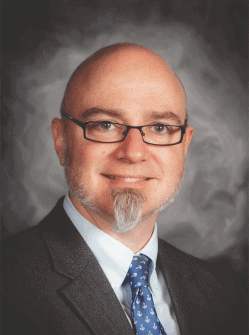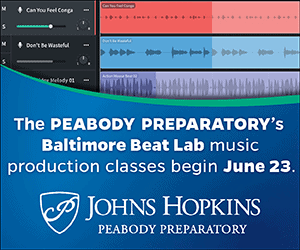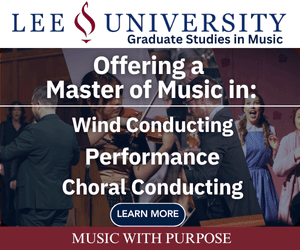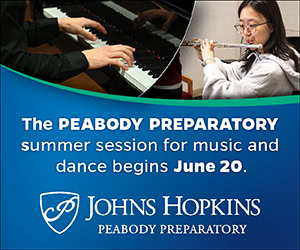/ News Posts / Guitar Class in the Tar Heel State: North Carolina
Guitar Class in the Tar Heel State
Number 28: The State of North Carolina
By Thomas Amoriello, Jr.
NAfME Council for Guitar Education Chair
The 50 States of Guitar Class Series is about sharing positive advancements in the guitar education movement with the NAfME membership, and in this edition the NAfME Council for Guitar Education features Bishop McGuinness High School (BMHS) in Kernersville, North Carolina, and the program led by Alan Hirsh. Dr. Hirsh is a well-known composer/arranger/guitarist and music educator who serves as Music Director and Fine Arts Department Chair at BMHS. The guitar program includes Guitar I, II, Honors Guitar Solo, and Honors Guitar Ensemble and has been recognized by the Guitar Foundation of America (GFA), America’s leading guitar organization, as one of six high school programs in the country to be college-prep certified. The GFA Certification Program is for for-credit, pre-college guitar programs in public and private schools in the United States and represents GFA’s standard of excellence in guitar education.
Alan is also the founder of the Piedmont Guitar Orchestra and actively directs festival guitar orchestras around the country, including the Appalachian Guitarfest Orchestra, the PCGS Guitarganza Orchestra, the Long Island Guitar Festival Orchestra, and the Shearer Summer Institute Guitar Orchestra in Zion National Park. He remains active as a composer, having written and arranged extensively for orchestra, band, chorus, guitar, and guitar ensemble. Alan’s many published guitar works include Mel Bay publications of Twenty Etudes in Fixed Positions and New Music for Classic Guitar, Trio Concertino, Holiday, Folk, Sacred, and Renaissance Collections for guitar ensemble as well as an extensive online catalogue of guitar ensemble music (guitarensemblemusic.com).
Thank you, Alan, and the guitar students of Bishop McGuinness for being leaders in guitar education for North Carolina.
Please tell us about your school and overall music program.
Bishop McGuinness High School (BMHS) is a small college prep, co-educational Catholic school in the North Carolina Triad (near Greensboro). We offer Beginning Guitar, Intermediate Guitar, Honors Guitar Solo, Honors Guitar Ensemble, Chorus, Band/Orchestra, Recording Studio, and AP Music Theory. Students perform in three concerts a year as well as musicals and monthly masses.

Photo courtesy of Alan Hirsh
Please tell us about your own personal musical background growing up and your collegiate experience.
I grew up in Tucson, Arizona, starting with saxophone and guitar at age 9. Early influences include Beatles and all classic folk and rock. I continued music study through middle and high school and was one of the first to be accepted into the “new” guitar program at the University of Arizona. I received a BFA in composition at the University of Arizona, studying with Robert Muczynski, and a MM and DMA in composition from the Peabody Conservatory, studying with Jean Eichelberger Ivey and Vladimir Ussachevsky.
At Peabody, my guitar compositions caught the attention of Aaron Shearer, who approached me about collaborating with him as the composer of his three-volume Learning the Classic Guitar Series published with Mel Bay in 1988.
How do the guitar family instruments fit into your teaching?
All students in my program play their own nylon-string classical guitars. The school owns two requintos (sounding a 4th higher) and contrabass (sounding an octave lower) used for our guitar ensembles. Acoustic and electric guitars, electric bass, mandolin, banjo, and ukulele are used in Orchestra/Band and Recording Studio classes when needed.
What obstacles did you face when you were first hired at your school? Now?
When I started at Bishop McGuinness, the music program was entirely under-developed; there were two large sections of music appreciation and a very small instrumental ensemble. The program was non-performance, and kids were taking music for the credit, not because they were necessarily passionate about it. I quickly expanded the program with performance focus, offering orchestra/band, chorus, and guitar. As the program grew in both size and interest, I added Intermediate Guitar, Guitar Ensemble, AP Music Theory and Recording Studio.

Photo courtesy of Alan Hirsh
What kind of classes related to the guitar do you teach?
I teach both Beginning Guitar and Honors Guitar Ensemble. Beginning Guitar focuses on foundational technique/musicianship. We use The Shearer Method, Book I, for which I composed all music. My Honors Guitar Ensemble performs in four to five concerts per year within and outside the school community, as well as in international festivals in New York, Quebec, and North Carolina. I arrange/compose all ensemble music, providing a diverse repertoire of styles and periods. In addition, I regularly include other instruments—violin, viola, cello, voice, winds, brass, and percussion—into guitar ensemble. For example, featuring solo cello or violins for Vivaldi Concerto arrangements, cello and percussion for Renaissance suite arrangements, choir and guitars for holiday music, etc. Lastly, our program is one of the first to become GFA college-prep certified.

Photo courtesy of Alan Hirsh
What would you like to say to the non-guitarist music educator who is about to or interested in incorporating the guitar into their program?
I do feel that guitarists should teach guitar, but for those new to it (and even, those who are not), I would recommend getting to know several excellent online sites. The Aaron Shearer Foundation and This Is Classical Guitar offer a wealth of free materials for both teachers and students—articles, videos, and sheet music.
At the Aaron Shearer Foundation, you can also find the online supplement for The Shearer Method Book I: Classical Guitar Foundations and Classroom Shearer: A Teacher’s Manual. The pedagogy for the Shearer Method (for which I am co-author) is very comprehensive and will easily satisfy the sequence for any first-year course. For ensemble needs, my site, Guitar Ensemble Music, offers arrangements and compositions that have been created with group diversity in mind. To this end, each piece includes parts ranging from easy, intermediate, to harder.
As for teaching technique, the most essential concern is proper guitar/body positioning, the foundation of all technical growth (no matter what musical direction the student ultimately takes). This includes alignment, follow-through, mid-range positioning, and uniform direction of movement, which should be well demonstrated and continually monitored. For teachers new to the guitar, I would absolutely recommend taking lessons with a professional guitarist first and always be at least several steps ahead of your students as you work with them.
Do you have any success stories you would like to share about students?
There are many success stories with students who have taken guitar throughout high school. Many of them start from scratch without any previous experience and rise over the years to become quite accomplished, both technically and musically. A few of my students have gone on to pursue guitar study in college and have become teaching and performing professionals.
What do you tell your talented students who are planning to pursue music or guitar studies in high school or college after they finish with you?
I recommend they diversify their study—not just in performance, but perhaps also education, business, etc., anything that makes them more multi-talented. These days, I feel the job market is looking for that.
Do you have any networking or advocacy tools that have worked for you promoting your program that would help other educators?
For years I’ve served on the board of our local Piedmont Classical Guitar Society and have organized many events for our schools and community, including a two-day high school focused festival and an annual community guitar concert that showcases the school programs within the Triad community—Winston-Salem, High Point, and Greensboro.

Photo courtesy of Alan Hirsh
Of course, one of the best advocacy tools is our parents. When their child participates in community concerts, many are motivated to help, perhaps with chaperoning, financial support, or even with community promotion. It’s always a win-win situation.
What kind of future do you see for guitar in music education in the North Carolina school system?
To my knowledge, only a handful of public schools currently offer guitar programs. I would hope that administrators and school board officials begin to recognize the value of guitar, offering it equitably to students in all of our schools. I once discussed the idea with a superintendent whose instant reaction was that guitar would compete with choral and instrumental programs. As someone who teaches all music classes, I feel that’s not necessarily true. There are many kids who simply aren’t interested in chorus, band, or orchestra and would love the guitar option, if offered.
What type of lesson plans have you done for your classes that may be unique?
In Class Guitar I, we embrace mindful learning. Lesson plans typically include group pre-reading and visualization, which involves vocalizing notes in rhythm and moving the hands in an air-guitar exercise. This is followed by right- and left-hand clarifications: playing right hand alone on open strings and then blocking out left-hand movements with strumming. If necessary, we isolate anything that is new “movement vocabulary” to develop coordination. All of this may take up to 60% or more of the class period and prepares the way for individual assimilation.

Photo courtesy of Alan Hirsh
Do you do any musical performances or activities outside of your public school teaching duties?
I regularly direct festival guitar orchestras—the Appalachian State University Guitarfest Orchestra, Long Island Guitar Festival Orchestra, and the Shearer Summer Institute Guitar Orchestra
Any last thoughts to conclude our interview?
One of my favorite, albeit challenging, activities, is to take guitar ensemble to festivals. Not only is it great from a travel and performance standpoint, but it is great bonding time for the group. The kids always come away much tighter as a family of friends and musicians. That’s something we definitely need in the world.
Read more “Guitar Class in 50 States” articles:
- Number 27: The Magnolia State (Mississippi)
- Number 26: The Peace Garden State (North Dakota)
- Number 25: The Treasure State (Montana)
- Number 24: The First State (Delaware)
- Number 23: The Buckeye State (Ohio)
- Number 22: The Yellowhammer State (Alabama)
- Number 21: The Sunflower State (Kansas)
- Number 20: The Great Lakes State (Michigan)
- Number 19: The Lone Star State (Texas)
- Number 18: The Bluegrass State (Kentucky)
- Number 17: The Golden State (California)
- Number 16: The Show-Me State (Missouri)
- Number 15: The Keystone State (Pennsylvania)
- Number 14: The Last Frontier State (Alaska)
- Number 13: The Beehive State (Utah)
- Number 12: The Peach State (Georgia)
- Number 11: The Cornhusker State (Nebraska)
- Number 10: The Gem State (Idaho)
- Number 9: The Old Dominion (Virginia)
- Number 8: The Aloha State (Hawaii)
- Number 7: The Land of Enchantment (New Mexico)
- Number 6: The Sunshine State (Florida)
- Number 5: The Grand Canyon State (Arizona)
- Number 4: The Ocean State (Rhode Island)
- Number 3: The North Star State (Minnesota)
- Number 2: The Silver State (Nevada)
- Number 1: The Garden State (New Jersey)
About the author:
 Thomas Amoriello Jr. serves as the chair on the NAfME Council for Guitar Education and is also the former Chairperson for the New Jersey Music Education Association. Tom has taught guitar classes for the Flemington Raritan School District in Flemington, New Jersey, since 2005 and was also an adjunct guitar instructor at Cumberland County College, New Jersey, for five years. He has earned a Master of Music Degree in Classical Guitar Performance from Shenandoah Conservatory and a Bachelor of Arts in Music from Rowan University. He is the author of the children’s picture books A Journey to Guitarland with Maestro Armadillo and Ukulele Sam Strums in the Sand, both available from Black Rose Writing. He recently made a heavy metal recording with a stellar roster of musicians including former members of Black Sabbath, Whitesnake, Ozzy Osbourne, Yngwie J. Malmsteen’s Rising Force, and Dio that was released on H42 Records of Hamburg, Germany. The record released on 12-inch vinyl and digital platforms has received favorable reviews in many European rock magazines and appeared on the 2018 Top 15 Metal Albums list by Los Angeles KNAC Radio (Contributor Dr. Metal). Visit thomasamoriello.com for more information.
Thomas Amoriello Jr. serves as the chair on the NAfME Council for Guitar Education and is also the former Chairperson for the New Jersey Music Education Association. Tom has taught guitar classes for the Flemington Raritan School District in Flemington, New Jersey, since 2005 and was also an adjunct guitar instructor at Cumberland County College, New Jersey, for five years. He has earned a Master of Music Degree in Classical Guitar Performance from Shenandoah Conservatory and a Bachelor of Arts in Music from Rowan University. He is the author of the children’s picture books A Journey to Guitarland with Maestro Armadillo and Ukulele Sam Strums in the Sand, both available from Black Rose Writing. He recently made a heavy metal recording with a stellar roster of musicians including former members of Black Sabbath, Whitesnake, Ozzy Osbourne, Yngwie J. Malmsteen’s Rising Force, and Dio that was released on H42 Records of Hamburg, Germany. The record released on 12-inch vinyl and digital platforms has received favorable reviews in many European rock magazines and appeared on the 2018 Top 15 Metal Albums list by Los Angeles KNAC Radio (Contributor Dr. Metal). Visit thomasamoriello.com for more information.
Did this blog spur new ideas for your music program? Share them on Amplify! Interested in reprinting this article? Please review the reprint guidelines.
The National Association for Music Education (NAfME) provides a number of forums for the sharing of information and opinion, including blogs and postings on our website, articles and columns in our magazines and journals, and postings to our Amplify member portal. Unless specifically noted, the views expressed in these media do not necessarily represent the policy or views of the Association, its officers, or its employees.
Catherina Hurlburt, Marketing Communications Manager. September 27, 2019. © National Association for Music Education (NAfME.org)
Published Date
September 27, 2019
Category
- Ensembles
Copyright
September 27, 2019. © National Association for Music Education (NAfME.org)




